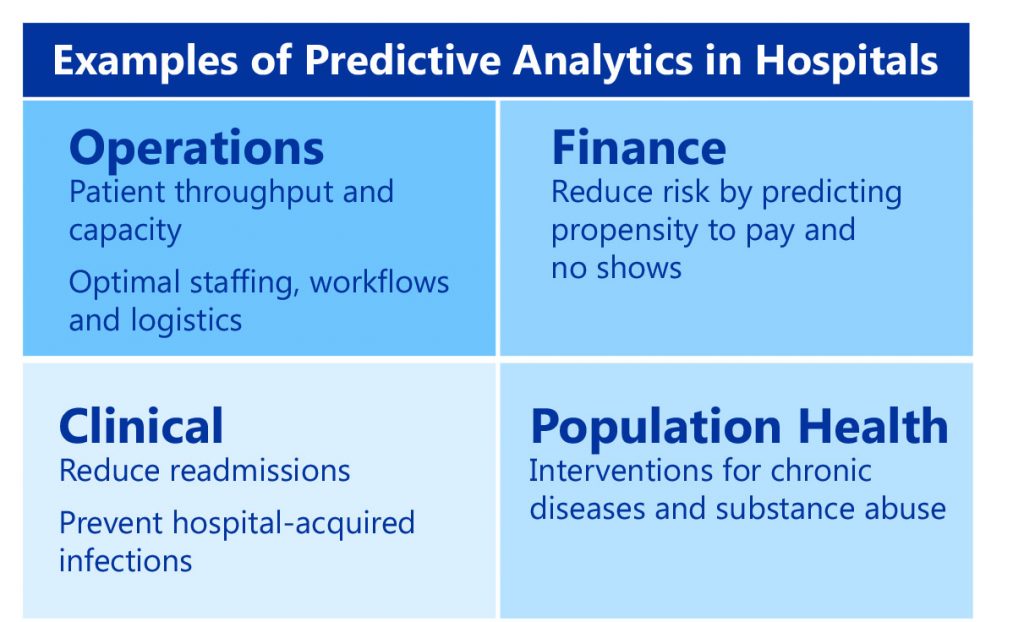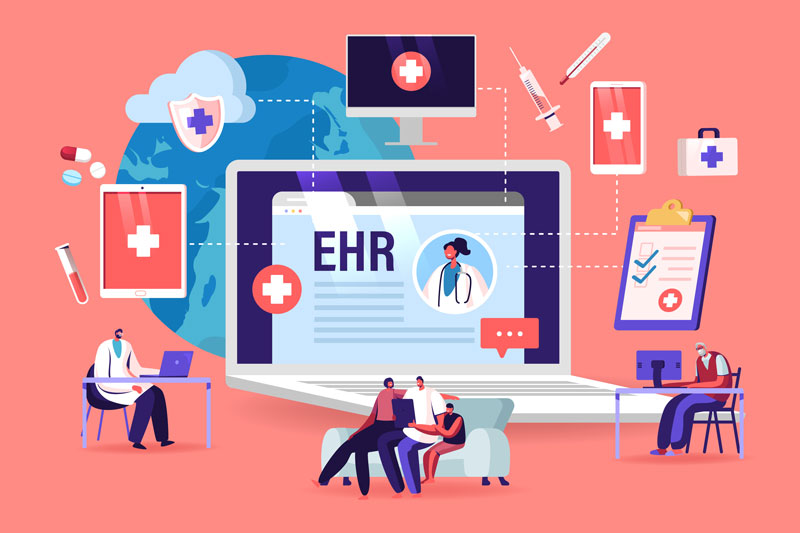 Predictive analytics is a technology whose time has come. In healthcare, hospitals are beginning to use advanced analytical techniques to improve patient outcomes and optimize operations with some impressive results.
Predictive analytics is a technology whose time has come. In healthcare, hospitals are beginning to use advanced analytical techniques to improve patient outcomes and optimize operations with some impressive results.
Tweet: Why the time is right for predictive analytics in healthcare
Predictive analytics is the process of learning from past data to make predictions about future outcomes. Several factors have set the stage for the emergence of healthcare predictive analytics in 2018 and beyond. In this blog, we will consider three reasons why the time is right.
1. Abundance of data and tools
Predictive analytics is not totally new to healthcare. Hospitals have been relying on tools such as risk calculators for years. What’s new is the vast amount of data and tools as well as growing interest in using them to produce insights. The vast majority of U.S. hospitals and office-based physicians now use electronic health records, according to the American Hospital Association. Innovative technologies are creating new streams of data, such as DNA sequencing, RFID tags, continuous monitoring devices, and patient wearables.
As interactive software becomes more prevalent and easier to use, predictive analytics is no longer just for statisticians. Hospital leaders are beginning to use these technologies, too. Many healthcare organizations have already implemented business intelligence systems and are now looking to squeeze more value from their data. To help with this, they are beginning the move from descriptive to predictive analytics.
There is still a bit of “Wild West” feel to predictive analytics in healthcare: it shows great promise but the applications are still emerging. It remains to be seen precisely which applications will be the most effective and relevant and which areas will see the greatest ROI.
2. Strong interest
The transition from fee-for-services to value-based healthcare may be making advanced analytics a necessity for decision-makers, not just something that is “nice to have.” Today’s healthcare leaders demonstrate a strong interest in predictive analytics in order to protect their patients more efficiently. Just over 30% of hospitals have used some type of predictive data analytics for a year or longer, according to an article from Hospitals & Health Networks. The vast majority of healthcare executives (80%) say they think the technology can improve patient care.
To meet pent-up demand for data scientists, many universities in the U.S. and Europe now offer degrees and certificates in healthcare analytics. A growing number of predictive analytics conferences give professionals and academics opportunities to share their healthcare use cases. Investors clearly believe in the long-term potential of predictive analytics: between 2011 and Q3 2014, they poured $1.9 billion into companies that purport to deliver predictive analytics, according to Rock Health’s digital health funding database. In 2017 alone, companies leveraging artificial intelligence and machine learning in Rock Health’s database collectively raised $698 million, despite uncertainties about which of these technologies will succeed in the long run.
3. Actionable insights
Predictions, of course, are most useful when they can be turned into action. In the healthcare setting, the possibilities for predictive analytics are almost endless. U.S. hospitals are currently experimenting with predictive analytics applications in operations, finance, population health management, and clinical activities.

Predictive analytics offers hospitals massive opportunities to cut waste and to proactively provide services to patients before they need more costly interventions. Predictive analytics, done right, can connect data points throughout the healthcare cycle and deliver insights that go far beyond the capability and speed of the human mind to process on its own.
Closing thoughts
Healthcare rooted into predictive analytics may be an inevitable reality: Gartner predicts that some form of predictive or prescriptive algorithm will be embedded in 75% of all healthcare delivery processes by 2020. Now is the time for exploration and experimentation. To that end, Dimensional Insight is exploring opportunities to deliver predictive capabilities to our customers. We are working with Ventana Systems, a company with deep MIT roots and over 30 years of experience delivering predictive solutions.
If you’d like to learn about predictive analytics and simulation, you can download our Simulation eBook now.
Ready for a test drive of our healthcare analytics software?
- 3 Examples of How Hospitals are Using Predictive Analytics - February 15, 2018
- 3 Advantages to Using Simulation in Predictive Analytics - January 26, 2018
- Why the Time Is Right for Predictive Analytics in Healthcare - January 23, 2018


